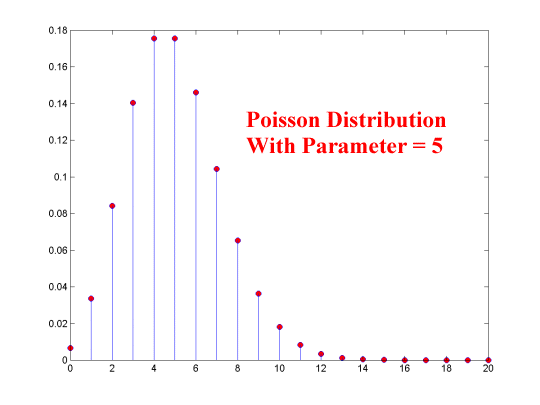45-733 PROBABILITY AND STATISTICS I
The Poisson Distribution
æ [(lx)e-l]/x!
ç
f(x) = ç x=0,1,2,3,4,...
ç
è 0 otherwise

Number Reports
With This
Deaths Many Deaths Proportion
---------------------------------
0 109 .545
1 65 .325
2 22 .110
3 3 .015
4 1 .005
---------------------------------
200 1.000
It is reasonable to assume that deaths from horse-kicks should occur
randomly over time. Consequently, the number per Corps-Year should
have a Poisson distribution. To test this, we can treat the above
data as a random sample and compute the sample mean. Using the sample
mean to estimate l, we can
compute the Poisson probabilities from this l
and compare them to the actual
frequencies in the above table and see how closely they match.
Number Reports
With This
Deaths Many Deaths Proportion l=.61
----------------------------------------
0 109 .545 .543
1 65 .325 .331
2 22 .110 .101
3 3 .015 .021
4 1 .005 .003
----------------------------------------
200 1.000 .999
Note that only .001 of the Poisson probability is above X=4.The Poisson Distribution and its Relationship to the Exponential Distribution
æ [(lt)xe-lt]/x!
ç
f(x) = ç x=0,1,2,3,4,...
ç
è 0 otherwise
æ 0 t < 0
F(t) = ç
è 1 - e-lt t ³ 0
Since this is a continuous function, we can take the derivative and obtain
the distribution:
æ le-lt t ³ 0
f(t) = ç
è 0 otherwise
Where
Mean = E(T) = 1/l; and
Variance = VAR(T) = 1/l2